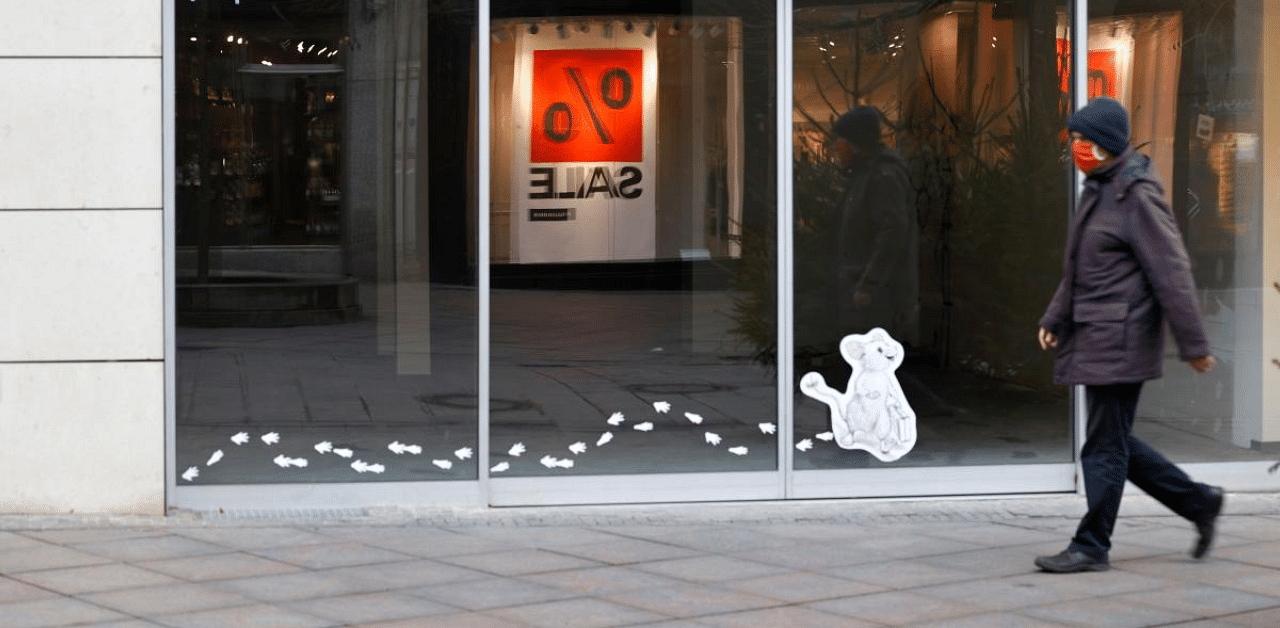
The charming German city of Luebeck was lovingly done up for the holidays with fairy lights and garlands but the usual festive bustle was eerily absent this pandemic-scarred winter.
Across the country, all non-essential businesses have been forced to shut until at least mid-January to help stem a second coronavirus wave engulfing Europe's top economy.
But many of the "closed" signs in shop windows in the town centre, with its signature brick facades and sumptuous art nouveau villas that made it a UNESCO World Heritage Site, have given way to "out of business" notices.
The Hanseatic city, population 220,000, has not escaped the urban blight which has plagued many German city centres for years but whose spread has been spurred on by the pandemic.
In Luebeck, known around the globe for its traditional marzipan and visited by 18 million tourists in 2019, 20 percent of retail space remains empty -- a figure that has been rising for several years.
In the middle of the main high street, Olivia Kempke points to a clothing store that went bust: "Some shops were already not doing well before the corona crisis and the current drop in sales is the final blow."
Head of Luebeck Management, an association that encourages local urban development, Kempke blames a boom in suburban shopping centres for siphoning off shoppers and ever higher commercial rents which "have grabbed merchants by the throat".
Another big driver out of urban commercial districts is online shopping, a sector given a huge lift from the pandemic. Sales in Germany are expected to soar by a third for November-December compared to one year ago.
That growth will come at the expense of shops that do not offer internet purchases, the German Retail Federation (HDE) said, fearing the closure of 50,000 stores due to Covid-19.
The lockdown of high-street shops in the all-important Christmas season is expected to cost them 16.9 billion euros ($20.6 billion) for November-December alone, the IW economic institute said.
The tighter rules from mid-December until mid-January and probably beyond are certain to push merchants further into the red.
Economy Minister Peter Altmaier said in November that shopping at small businesses was akin to "a national task, even a patriotic act", a message that quickly rang hollow as shops were forced to bring down their shutters.
The federal government has dramatically ramped up spending to try to ease the pain and is thrashing out a new e-commerce tax whose revenues would flow to high-street traders.
It has earmarked an additional 25 million euros for 2021 to shore up city centres.
The HDE is calling for an annual "urban emergency fund" of around 1.5 billion euros that would rejuvenate cities in the longer term.
"If we're not careful, we won't recognise our cities after the pandemic," HDE president Gerd Landsberg said. "We must take action."
The emergency government assistance comes in addition to the construction ministry's programme, created in 2002, to inject some 790 million euros annually to boost urban redevelopment.
Since then, 1,081 German cities and towns have benefited.
Hanau in the western state of Hesse was one of the first to profit from the scheme.
The city, whose landscape bore the dreary mark of hasty post-war architecture, has had a major facelift with a re-greening drive and improved access for those with reduced mobility.
Hanau built a mall popular with shoppers but filled it with independent stores and restaurants instead of the usual chain franchises, and installed a new public square.
It's a success story, said Frank Schwartze, an urban planning professor at Luebeck's Technical University, calling for the state funds to allow "city centres to adapt for new uses" to create "spaces for life" and not just consumption.
"The old retail commerce is not coming back," he said, calling for "places to walk and socialise" while making other "forms of mobility possible". In other words, fewer parking spots and more space for pedestrians, cyclists and scooters.
Luebeck has just in the past year started on a similar path with a few novelties including a community garden in the heart of town, widened sidewalks with places to sit, open-air cultural exhibitions and streets closed to vehicles.
"We noticed a return of people on foot and a 60 percent reduction in car traffic," said mayor Jan Lindenau.
"And citizens have gained in quality of life."